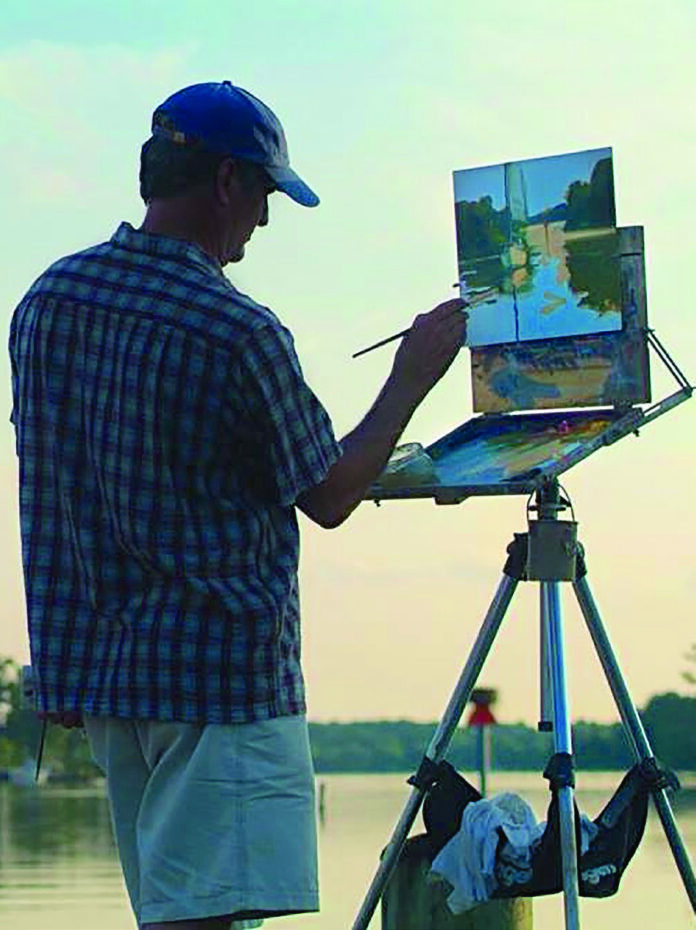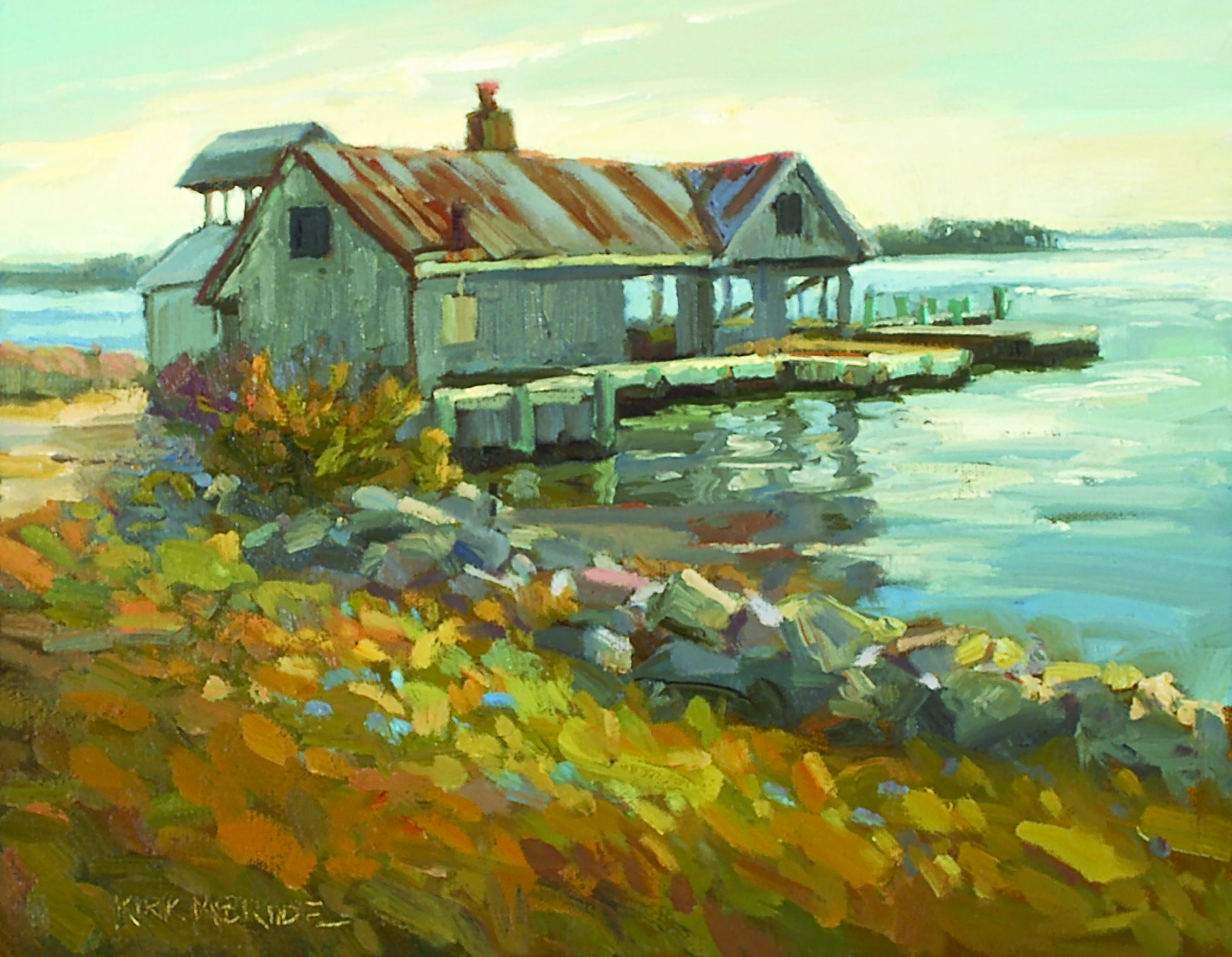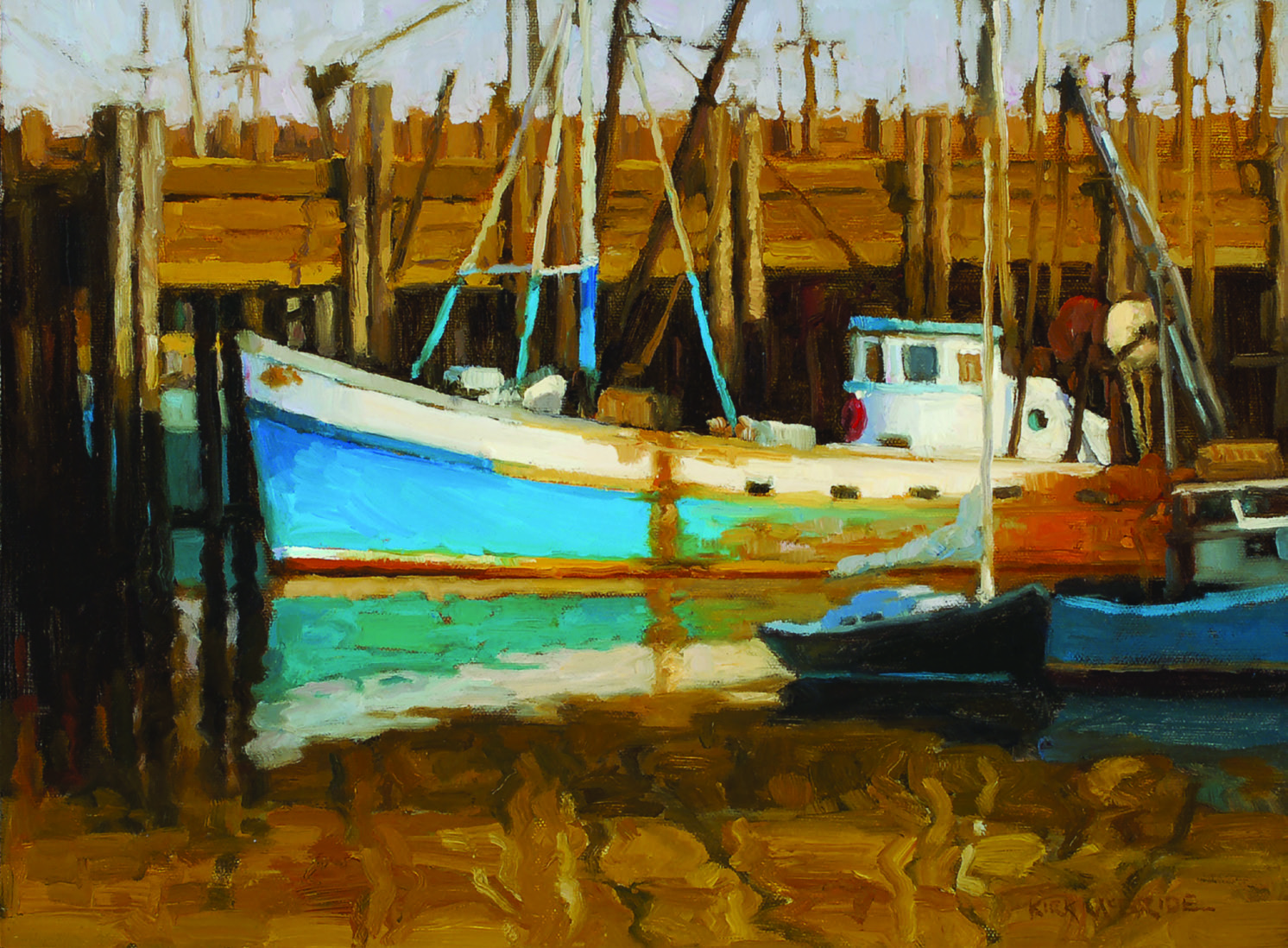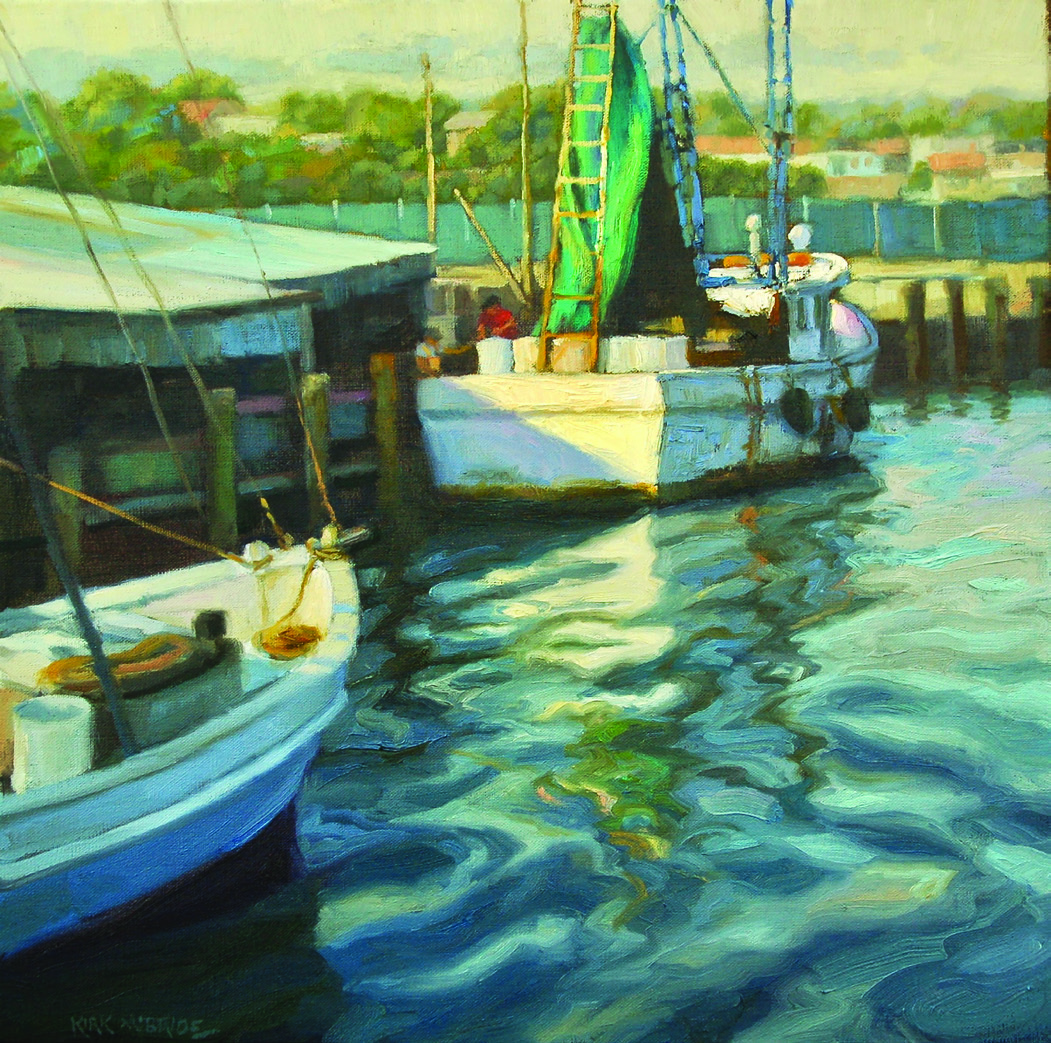
Before the fishing industry disappears completely from the East Coast landscape, Kirk McBride is documenting what’s left of this once-thriving way of life.
What Remains
by Kirk McBride
kirkmcbride.com
In my lifetime, there have been major changes in the fishing industry along the East Coast. Diminished fish populations and government regulations have made it hard to earn a living, driving the waterman to become an endangered species. Many of the rustic buildings, working docks, and classic wooden fishing boats are gone, replaced by waterfront condos, modern marinas, and shiny new recreational vessels.

I’ve painted this old clam-processing building many times. As clams are now few in the area, the place has been abandoned for years.
Close to Home
Living on Maryland’s Eastern Shore, I have easy access to the ocean, the barrier islands, and the back bays, as well as the Chesapeake and her tributaries. When I go out looking for painting subjects, I often find myself at a boat dock. The combination of water and sky with classic watercraft, old wood, rust, decay, and clutter creates subjects that call out to me.
Here, some of the old deadrise workboats and skip-jacks — once the workhorses of the Chesapeake Bay region — have been restored and are being used again. Back when there were millions of oysters in the bay, hundreds of skip-jacks would be out working the beds. Today there are only a few oysters and skipjacks left, but when the large sails of the remaining boats catch the late light, it’s a sight to behold.
With its long hull and shallow draft shape, the deadrise workboat was designed for crabbing, oyster tonging, and fishing in the shallow waters of the tributaries. A few of the older boats have been restored, and the basic form continues to be built today by local craftsmen.

‘The Blue Skies’ is one of a few remaining old-time draggers operating out of Provincetown, Massachu-setts. A new modern pier has been built and most of the draggers are gone, but the beautiful light, clear water, and huge tidal swings remain, giving the artist endless possibilities for paintings.
Harder to Come By
On my many trips along the Atlantic coast, north to Maine and south to Florida, I search for what still remains of other working harbors and old boats. Every year, however, it gets harder to find the subjects that appeal to me.
The clean docks, shiny white boats, and sterile environments of today’s harbors leave me uninspired. Mostly gone are the old wharves and sail-powered fishing boats that Emile Gruppe (American, 1896–1978) and Frederick J. Mulhaupt (American, 1871–1938) painted.

A scallop boat unloads its catch at the old gritty dock in Chincoteague, Virginia. Unfortunately, this dock is now gone, and a condo has been built in its place.
But All Is Not Lost … Yet
Although New England’s offshore fishing industry has faded from its former glory, some working harbors persist, and lobster fishing remains vital. A few of the old boats have survived and been restored as pleasure craft. In Massachusetts, huge seafood packing plants, restaurants, and museums have replaced most of the old gritty fishing shacks, but there is still plenty of activity and a variety of old and new boats.
Look hard around coastal Maryland and Virginia and you can still find some traces of the old way of life — a crew unloading their catch, a man steaming crabs, a few old fish shacks still in operation. It’s hard to say when these scenes might be gone forever, but for now, I return to these places often to draw inspiration for my plein air paintings and references for studio pieces.
***
PleinAir™ magazine is focused on landscape paintings by historical and contemporary artists, art collections, events, and the process of creating plein air paintings. Beautifully designed with rich reproductions on high-quality paper, PleinAir features the top artists and artworks from around the world. Start your subscription here!



